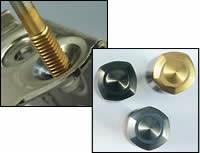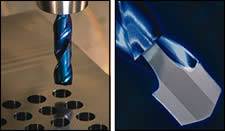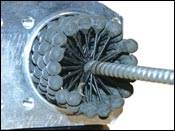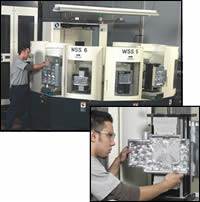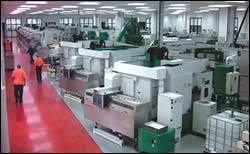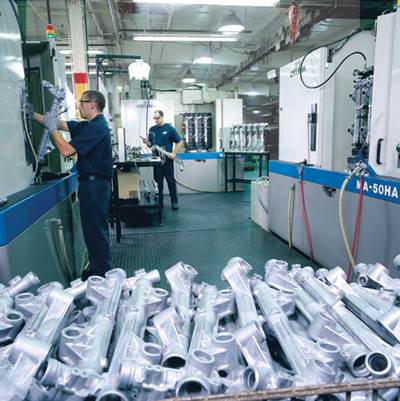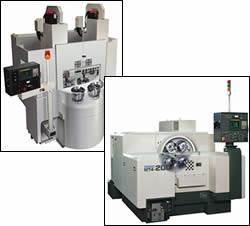Articles
3D Or Three-Axis Calibration: What’s The Difference?
Guarding against errors in the volumetric positioning of a machine tool is critical to machining contours and other 3D surfaces accurately.
Read MoreCreep-feed Grinding Is A Milling Process
Because creep-feed grinding is essentially a milling process, why not use a VMC? A grinding machine supplier describes how a VMC platform can make creep-feed grinding more effective.
Read MoreAir-Actuated Boring Tool Offers In-Process Gaging
An air-actuated boring tool semi-finishes cylinders on the down stroke and finishes on the up stroke. In-process gaging compensates for tool wear to maintain bore accuracy.
Read MoreWhen Cold Forming Threads Makes Sense
Recent tap geometry refinement and advances in coating technologies have made the chip-less, cold-forming operation suitable for a wider range of workpiece materials.
Read MoreDual-Carbide Technology Addresses Basic Drilling Challenge
A dual-carbide-grade drill has a micro-grain carbide core blended to provide toughness to prevent chipping at the drill's point. Surrounding the core is a second carbide grade that provides hardness needed for wear resistance at the drill's outer edges.
Read MoreLose The Peaks, Leave The Valleys
Plateau honing improves cylinder wall surface finish by gently removing tiny peaks of torn or folded material. Ball-style honing tools are commonly used to produce this desirable finish.
Read MoreMacro Economics
Instead of NC programs that are dedicated to particular parts and machines, this plant now uses macro programs that react to geometric variations across broad part families. The plant wrote these macros itself, and the return on this investment has been dramatically greater productivity.
Read MoreWhere Is Your Wiggle Room?
"Lights out" doesn’t require an intense commitment. This job shop achieves flexible unattended machining when it needs it using palletized HMCs.
Read MoreFive-Axis Machining Has Special Workholding Needs
This clamping system allows a workpiece to be rigidly clamped while raised up from the surface of the worktable on a five-axis machining center. Moving the workpiece away from the table creates clearance for the spindle nose and cutting tool when the table swivels the workpiece for multi-sided machining, or when the spindle head rotates and swivels to do contouring or sculptured surfaces. Without this clearance, the user may be forced to refixture the part or to switch to a longer, less rigid tool.
WatchRAMTIC System Still Ticking
When it first appeared in the early 1990s, RAMTIC (Renishaw’s Automated Milling, Turning and Inspection Center) pioneered the use of portable carrousels for palletized workpieces and the use of artifacts, or master components, by which a machine tool could check its own dimensional calibration. This innovative approach to process control is still highly effective as applied in the company’s most advanced machine shop, which opened in 2006. Carrousels and artifacts are very much a part of this new shop’s remarkable success.
Read MoreMachine Tools Used As Dedicated Equipment…For A Little While
Two keys to this shop’s success are versatility and speed. It uses flexible machining centers, rather than dedicated equipment, and constantly reconfigures them into new cells for new jobs. The speed at which it can do this, in addition to in-house tombstone manufacturing capability, provides the nimbleness to quickly respond to its customers’ needs.
Read MoreWhen Four Spindles Make Sense
For the right applications, four-spindle CNC chuckers offer practically zero delay for part loading. That’s because two spindles can be loaded while the other two are making chips.
Read More


